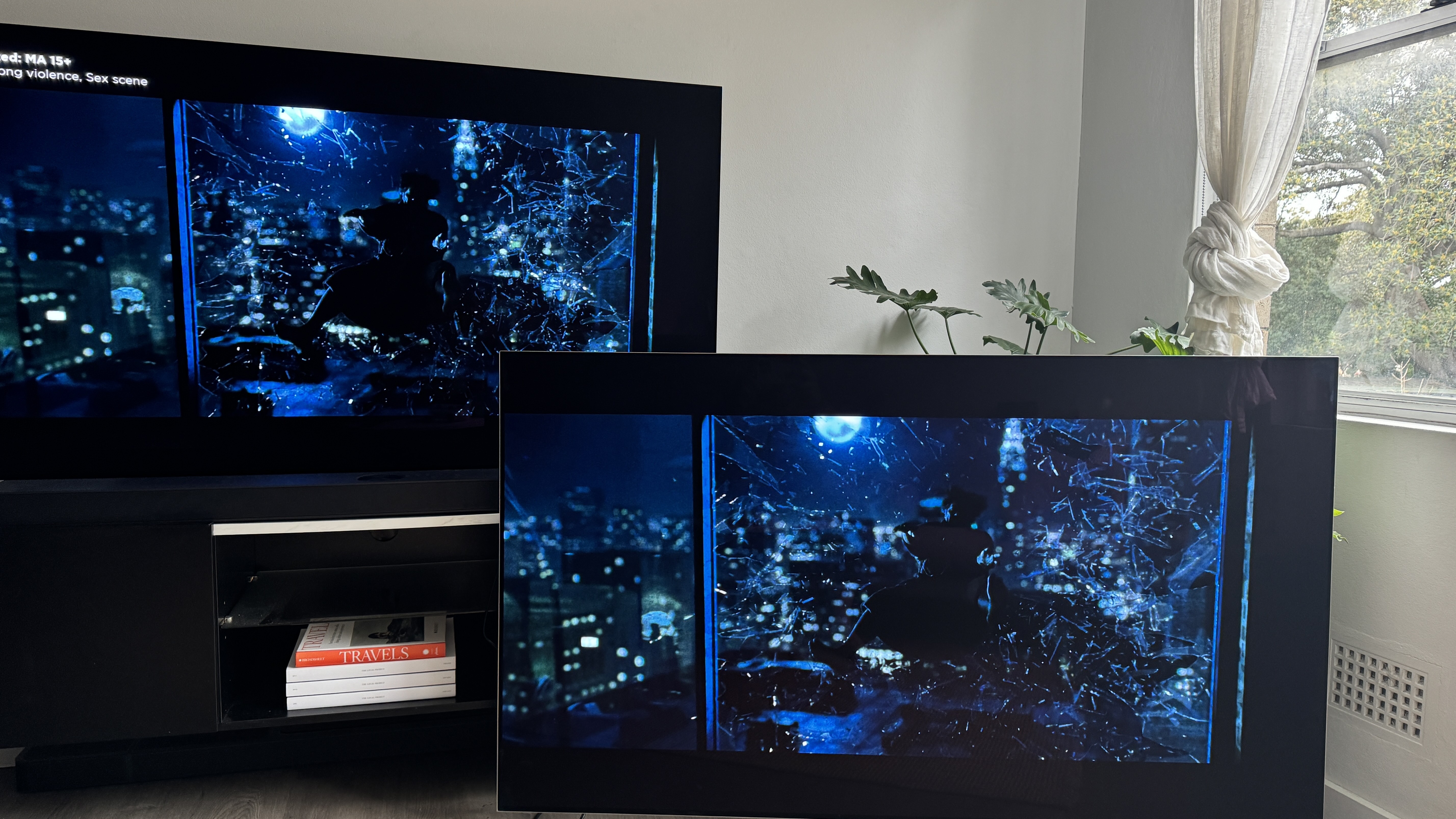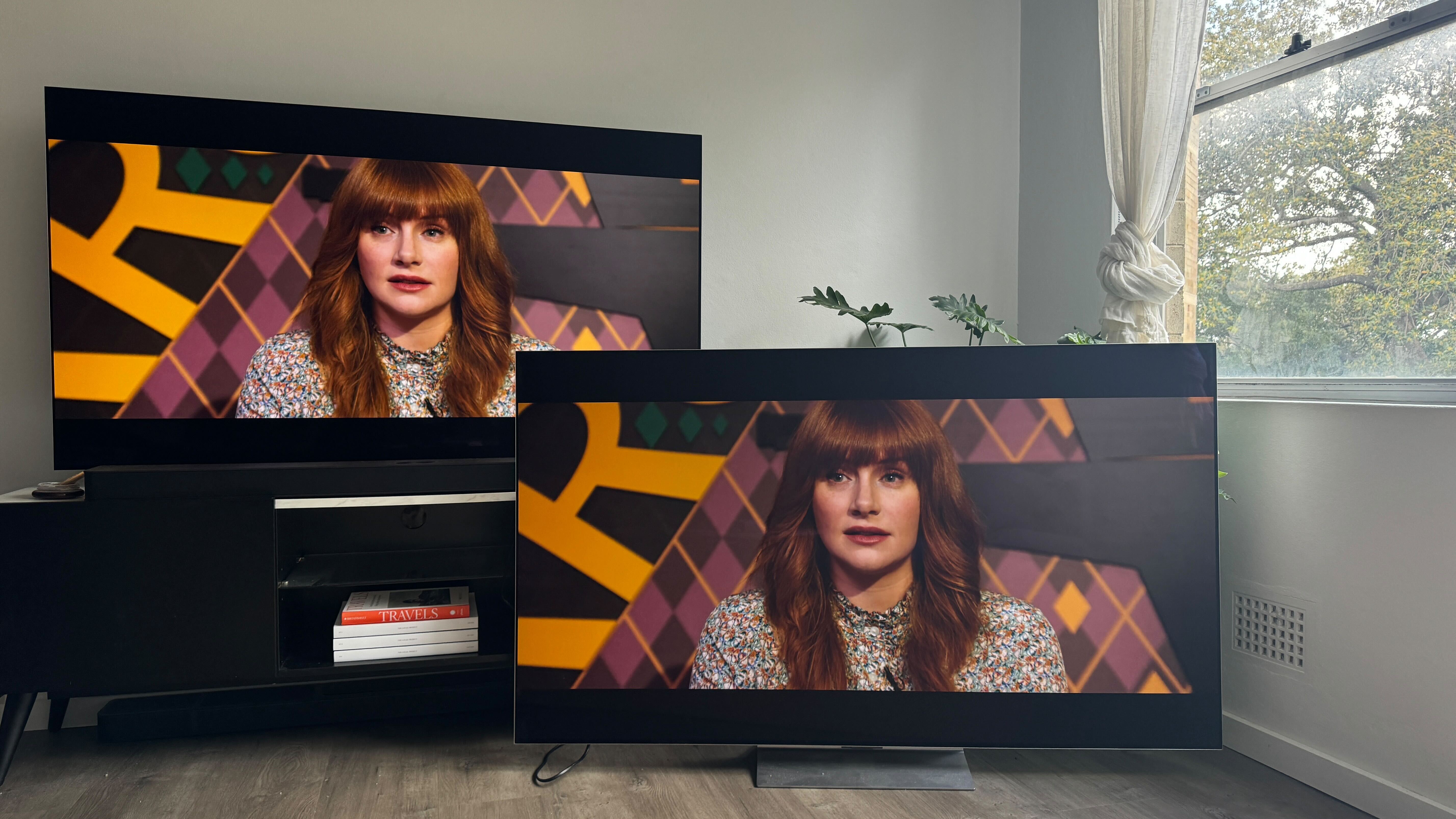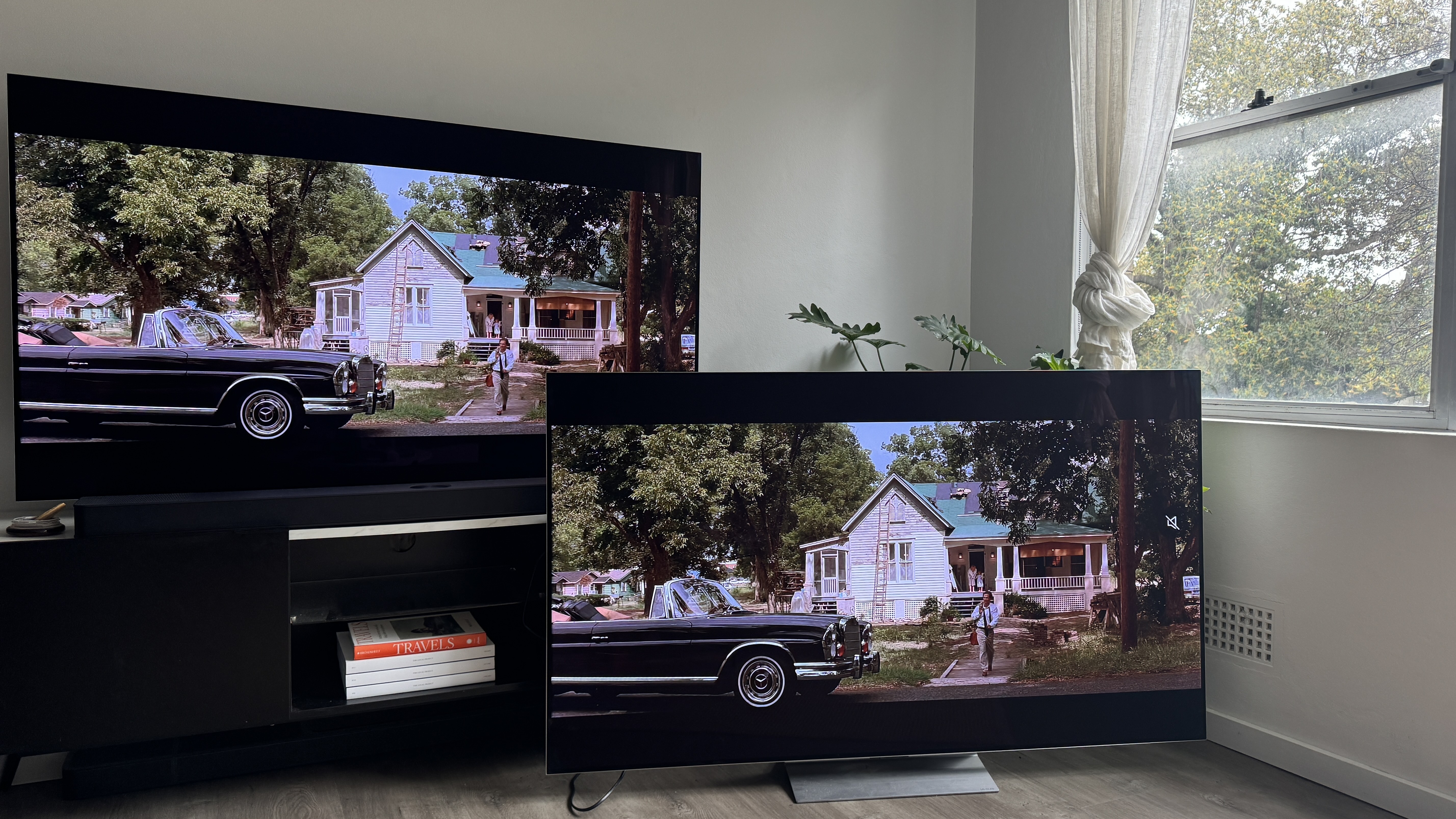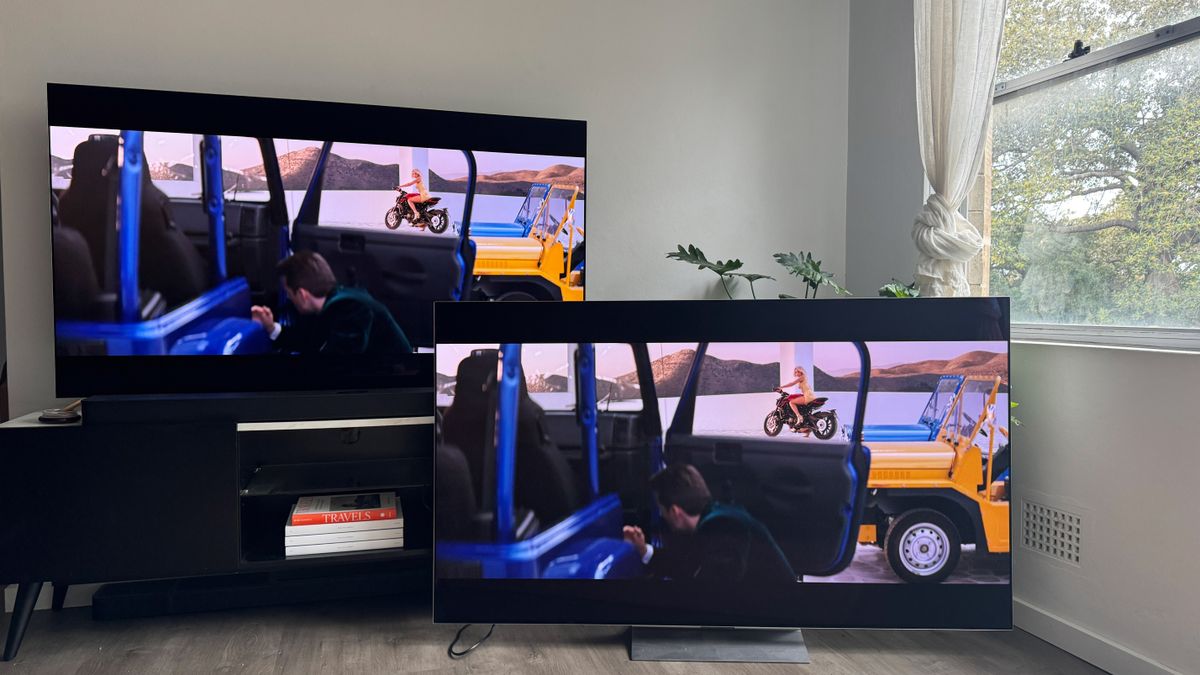When new TVs are announced each year, they come bearing claims of improved brightness, more discernible contrast and the classic line, “closer to what the director intended.” I often remain sceptical about such claims, and wait until I go eyes-on to make my own judgement. Of course a manufacturer is going to say its latest creation is the ‘best ever’ otherwise there’d be no need to take much notice of it, right?
Reviews of new models pull from a reviewer’s memory and experience of a predecessor, and it’s not often we get to view two screens side by side, and especially not under the same conditions. But that’s exactly what I recently did when I had the LG G3 and G4 OLED TVs in my living room for a couple of weeks. I was gobsmacked by the differences.
Let it shine
I’ve been using the 65-inch LG G3 OLED as my main TV for the last year, and I’ve been loving it. But as soon as I fired up the G4, I noticed a subtle – but significant – visual difference. Images on the G4 appeared to have a greater sense of depth, which can likely be attributed to the increased brightness, ushered in by the combination of a second-generation Micro Lens Array (MLA) panel and a new Alpha 11 processor.
LG says the Alpha 11 is four times more powerful than the Alpha 9 in the G3 OLED with neural processing tasks – think upscaling and deciphering metadata as prime examples – 1.7 times more powerful for graphics performance and 1.3 times more powerful with CPU performance.
Since both models use OLED technology, each will exhibit the same level of black thanks to the ability to switch off individual OLEDs/pixels that aren’t required for a particular scene. The increase in brightness, however, serves to improve contrast as there is a more obvious visual difference between the brightest and darkest areas of an image.
This results in a picture with, to my eyes, more obvious depth. Indeed, LG Display, the manufacturer of the MLA OLED panel used in the G4 (and the G3) says the second-generation is capable of reaching a maximum brightness of 3000 nits. The first-gen panel, found on the G3, was only theoretically capable of reaching around 2000 nits of maximum brightness. Of course, the 3000 nits figure attributed to the LG G4 OLED, is also going to be theoretical, and unlikely to be the level you’ll actually achieve during real-world viewing. And, if it is achieved, it won’t be across the entire screen, but rather a much smaller window and only for a few moments.
Speaking of day-to-day viewing, you might not think this makes much of a difference, and if you already own the G3 OLED, you may not feel the need to upgrade to the G4. But when it comes to movies, particularly those in 4K and, to a greater extent, Dolby Vision or HDR, they do have a much more cinematic feel. Indeed, the image produced by the G4 OLED is going to be ‘closer to what the director intended’.
I noticed a good example of where this extra brightness, coupled with the improved handling of the OLED light source by the MLA tech, came into play. The image below shows an opening scene from the movie Watchmen. Lights in the windows of buildings in the background appear to have more prominence, and there is greater shine and texture to all the shards of glass from the shattered window.

The extra hint of glistening is made possible because the LG G4 OLED is capable of going brighter than its predecessor. The MLA tech also at play works by covering the OLED panel with a layer of thousands of microscopic lenses. These lenses help to better control and direct the light they’re being fed. In this instance, they’re able to concentrate that light on a smaller, more specific area – the glass shards – in the G4 compared to the G3.
The other key takeaway here is that I viewed both TVs under the same conditions, which as you can see from the images, was next to an open window with sunlight coming in. OLED TVs are traditionally marketed as being ideal for darker rooms, as they don’t have the brightness power to counter act bright sunlight.
But the G4 OLED fared far better than I expected, and much better than the G3. The boost in brightness on this year’s flagship screen – coupled with an anti-glare coating – makes it a more viable option for daytime viewing, with contrast in particular still proving strong.
Color control
Not only did I notice greater depth in the images produced by the G4 OLED in relation to the G3, but some colors were also obviously different. This certainly surprised me, but there was no denying the difference in some scenes.
A perfect example came when watching Argylle on Apple TV+ in 4K Dolby Vision. The image below shows the G3 and G4 side-by-side (G4 on the stand, G3 on the floor), with a close-up shot of Bryce Dallas Howard. Both TVs are using their built-in Apple TV apps, and I matched picture settings on both. The difference in the color of her hair on both screens is plain to see, with the G4 exhibiting much clearer red and ginger hues. The G3 meanwhile dulls her hair color somewhat, making it appear more brown-ish in comparison.

There’s also greater shine to her hair, which can be attributed to both the Alpha 11 processor recognizing said shine should be there, and the second-generation MLA panel being capable of delivering that information to the audience. There is also greater gradation to the yellow behind her, further hammering home the improved technical capabilities of the G4 OLED.
Subtle but significant upscaling improvements
One area I particularly wanted to compare was upscaling of non-4K content, since this will still likely be the main source for most owners – although, the best streaming services are slowly but surely increasing the amount of 4K content available.
LG touts the Alpha 11 processor in the G4 OLED as being better at upscaling than ever before, especially thanks to the inclusion of AI Super Upscaling. This new AI-powered feature claims to remove noise and enhance contrast of non-4K content, without making it appear artificial.
Truth be told, the difference between the two screens was less noticeable – to me at least – when viewing regular HD content side-by-side.
The image below is from an opening scene of A Time to Kill. As I noticed – and have mentioned – with 4K scenes, there is a slightly more pronounced shine to Matthew McConaughey’s black Mercedes-Benz convertible. The G4 also manages to pick out slightly more detail in the tree on the right side of the frame and there is more gradation to the green leaves in the trees on the left.

These differences are certainly less noticeable than those observed when I viewed 4K HDR content, and it was only really when I looked back at the picture I took afterwards that my eyes locked onto them.
To be honest, I did expect a slightly stronger, or more pronounced improvement, given the LG G4 OLED has a processor that has four times as much neural processing power as the G3 OLED it replaces. It’s the neural processing that plays the biggest role when upscaling content because it has to intelligently figure out where and how to fill in the blanks of an image.
Having said that, the LG G3 is already a great performer when it comes to upscaling. If anything, the G4 OLED has taken an already-winning formula and given it an extra polish around the edges.
Better. As expected.
The LG G4 OLED is a sensational TV, and it makes multiple improvements over its predecessor. Are they enough to persuade current G3 owners to upgrade? That’s ultimately hard to answer, because budget constraints may not allow for starters. What is easier to determine is the fact the G4 OLED can easily be dubbed the best pure OLED TV available right now.
The second-generation MLA technology has seen brightness undergo a radical increase – to the point where it’s almost unbelievable – and while it may still fall short of the levels capable by Mini LED screens, it makes up for it in glorious color and truly deep blacks.
TechRadar’s full review of the LG G4 OLED TV is coming soon, which will go into even greater depth surrounding its design, features and capabilities. Be sure to check back soon to read our final verdict.

